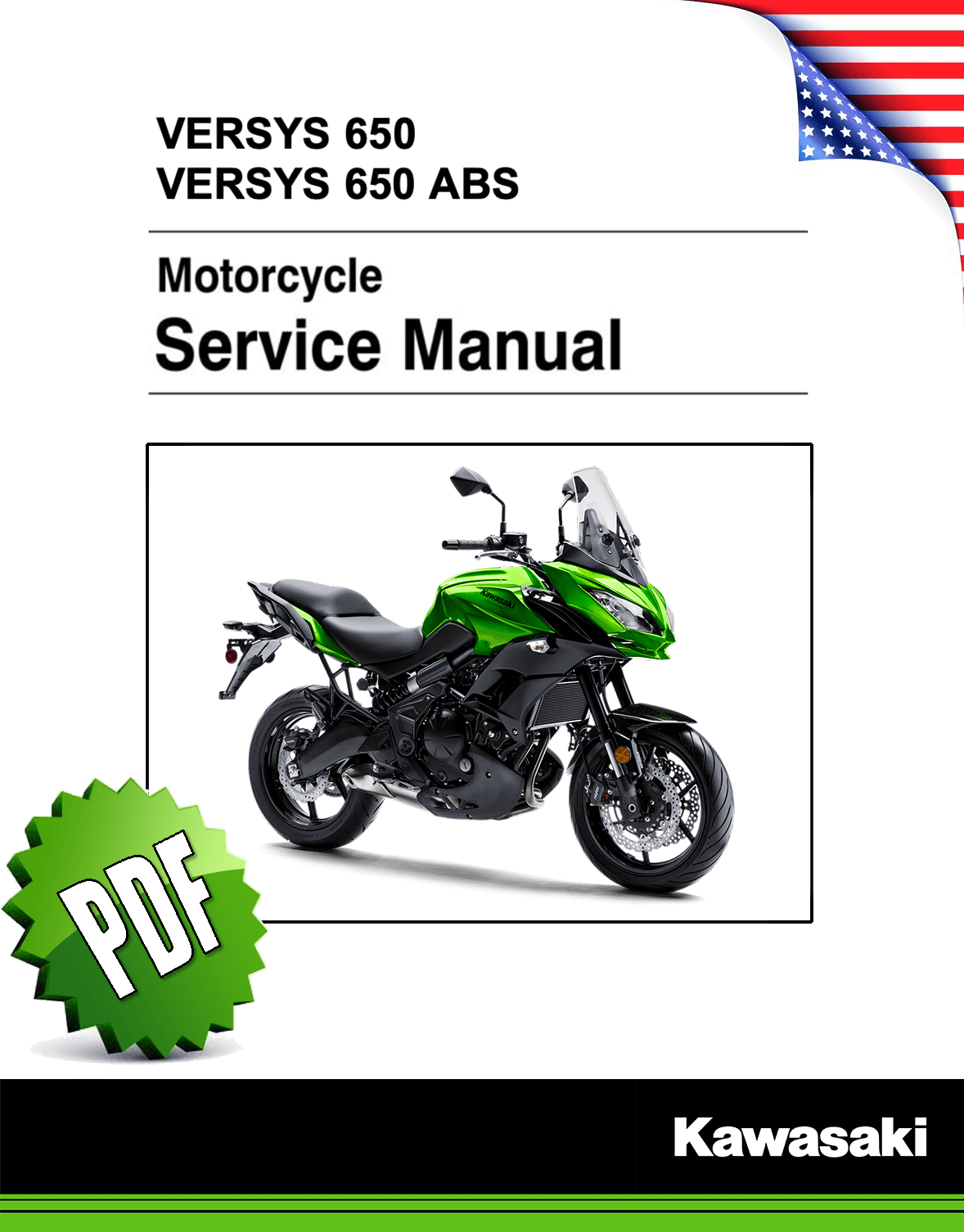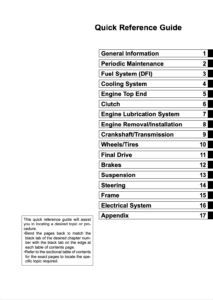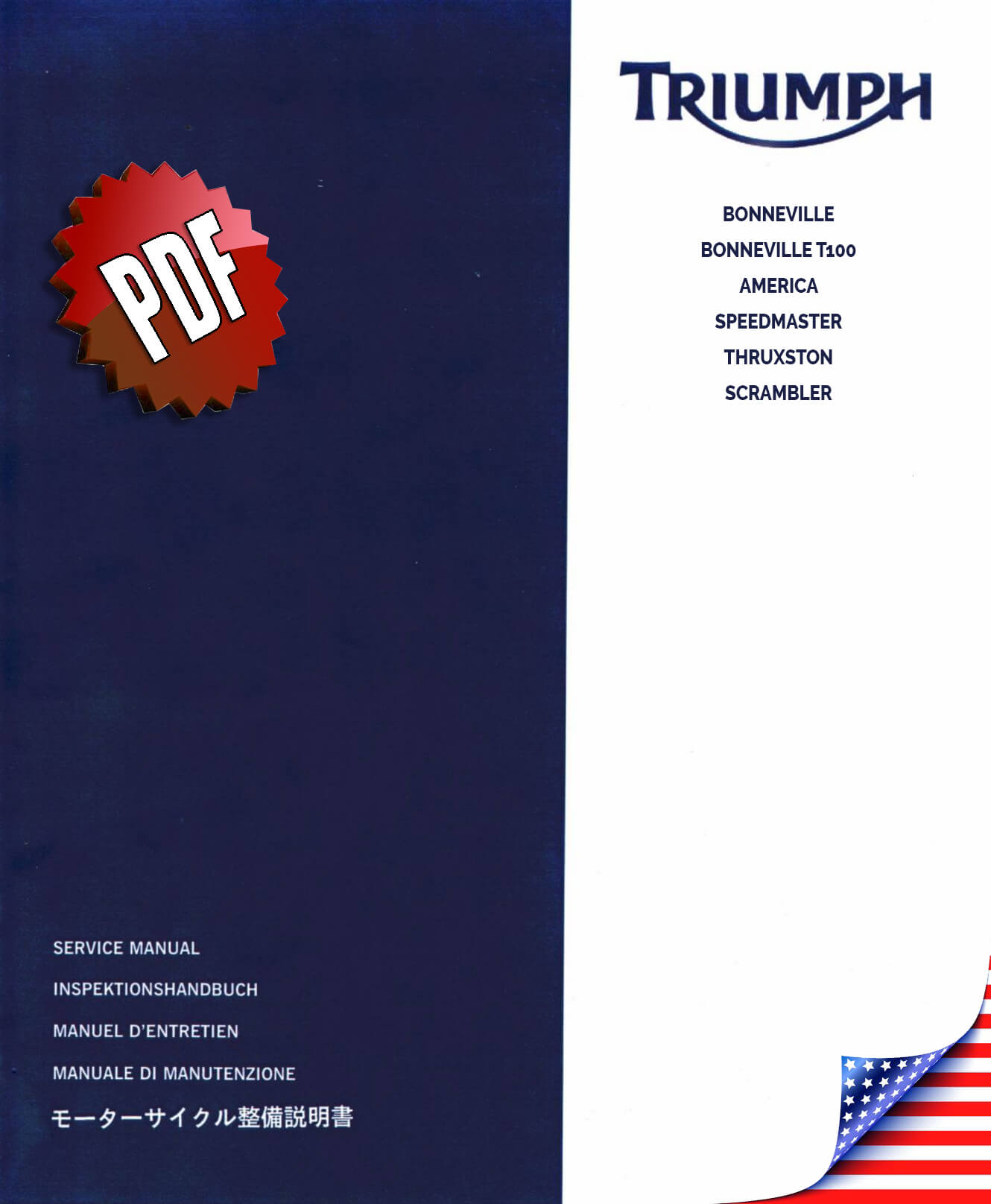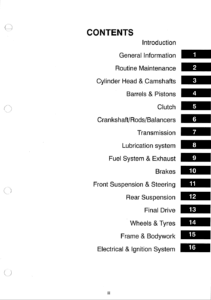Complete PDF version of the Service Manual for the Honda CBR600RR 3rd gen. A MUST for every CBR600RR owner.
Download: Immediately after payment!
OEM Original factory workshop manual.
Models covered by this manual: 2007-2008
Number of pages: 536 pages
Table of contents:
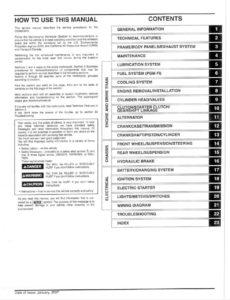
This PDF repair manual can be downloaded right after the payment process in complete, on the device of your choice. You will also receive the download link by email along with your receipt.
We do not offer printed manuals, for the following reasons:
- it is more eco-friendly to use a digital version
- your manual never gets dirty or greasy
- you can always choose to print the specific page(s) you need to work on your bike
- you receive your manual immediately after payment
- it is searchable

Honda CBR600RR
The Honda CBR600RR is a 599 cc (36.6 cu in) motorcycle that has been produced by Honda since 2003 as part of the CBR series. The CBR600RR was advertised as Honda’s top-of-the-line middleweight sport bike, replacing the 2002 Supersport World Champion 2001–2006 CBR600F4i, which was subsequently repositioned as the milder, more street-oriented sport bike behind the technically superior and uncompromising race-replica CBR600RR. It continued to win the Supersport World Championship until 2003, then again in 2008, and again in 2010.
Model history
The CBR600F4i, Honda’s previous 600-class sport bike, was regarded as a blend of practicality and performance, as capable as other Supersport-racing 600s but a more docile and pleasant street bike in comparison to the rival Kawasaki Ninja ZX-6R, Suzuki GSX-R600, and Yamaha YZF-R6. When it was first debuted in 1999, the CBR600F “beat off racier opponents on the track while still managing to be a more practical streetbike,” as Motorcyclist put it, “one golf club that functions like a complete bag.”
Honda changed to a more aggressive, less compromising strategy with the successor 2003 CBR600RR. “We created the RR in a completely different style than any previous model, amid the churning brawl that was the middleweight class at the time,” Honda’s CBR-RR Project Leader Hiroyuki Ito commented. Honda has traditionally built a roadbike and then adapted it for racing. With the RR, though, we first created a prototype racer and then handed it over to the production department.” It is standard practice among sport bike manufacturers such as Buell, Ducati, Honda, Kawasaki, Suzuki, Triumph, and Yamaha. to rotate an outdated model down to the next tier of a product line as it is eclipsed by a model with the newest technology.
2007–2008
Honda unveiled the all-new CBR600RR for the 2007 model year on September 6, 2006.
The most significant overhaul of the CBR600 since the debut of the RR in 2003 has a completely new engine, frame, and bodywork, resulting in a smaller, lighter, more powerful CBR600RR with a class-leading power-to-weight ratio and unsurpassed performance.
The makeover was mostly concerned with weight. As a result, the dry weight was reduced by 9.1 kg (20 lb) over the 2006 model, from a stated 163.7 kg (361 lb) to 154.7 kg (341 lb). Without fuel, the weights tested were 182–182 kg (401–402 lb).
Honda’s engineers began with the engine when revamping the CBR600RR for less weight and improved performance. The totally redesigned engine was smaller and lighter than its predecessor, with designers carefully arranging all internal components to accomplish reductions in the motor’s length, breadth, and height, as well as a weight reduction of 2 kg (4.4 lb) compared to the powerplant in the 2006 model. In independent testing, horsepower climbed to around 105 hp (78 kW).
The frame was lighter and more compact than the CBR600RR from 2006. The new bike’s handling was enhanced by its 22 mm (0.87 in) shorter wheelbase, as well as the designer’s emphasis on rigorous mass centralization. Despite the reduced wheelbase, the swingarm on the 2007 model was 5 mm (0.20 in) longer than on the 2006 model, which was made feasible by the new bike’s engine’s more compact proportions.
The suspension of the 2007 model was essentially identical to that of the 2006 model, with the same 41 mm (1.6 in) inverted fork in front and Honda’s Unit Pro-Link rear suspension system dampening the rear wheel. The new three-spoke cast aluminum wheels were likewise lighter than those on the 2006 bike, which helped to the suspension’s improved performance. The front brakes had dual radial-mount four-piston calipers and dual 310 mm (12 in) discs, while the rear brakes featured a single-piston caliper with a 220 mm (8.7 in) disc. The Honda Electronic Steering Damper (HESD) device, which was also available on the CBR1000RR, was hidden behind the steering head.
The smaller, sharper-edged redesigned front upper fairing was dominated by the big central ram-air duct, which fed the airbox through an aperture in the steering head portion of the frame and was separated from the sides of the fairing by a significant gap for air management purposes, according to Honda. The tail section was also smaller and sharper-edged, riding on top of a substantially restyled under-seat muffler.
Combined ABS prototype
On June 9, 2008, Honda unveiled a CBR600RR prototype with an all-new braking system dubbed Featured ABS, which combined combined braking, anti-lock braking, and brake-by-wire technologies. A computer control unit was utilized in combined ABS to guarantee the proper balance of front and rear brake application, as well as to control when the ABS should engage. The technology was meant to be as subtle as possible by deferring the activation of the ABS until the very last second. On the production 2008 CBR600RR, combined ABS was not available.
Source: Wikipedia


